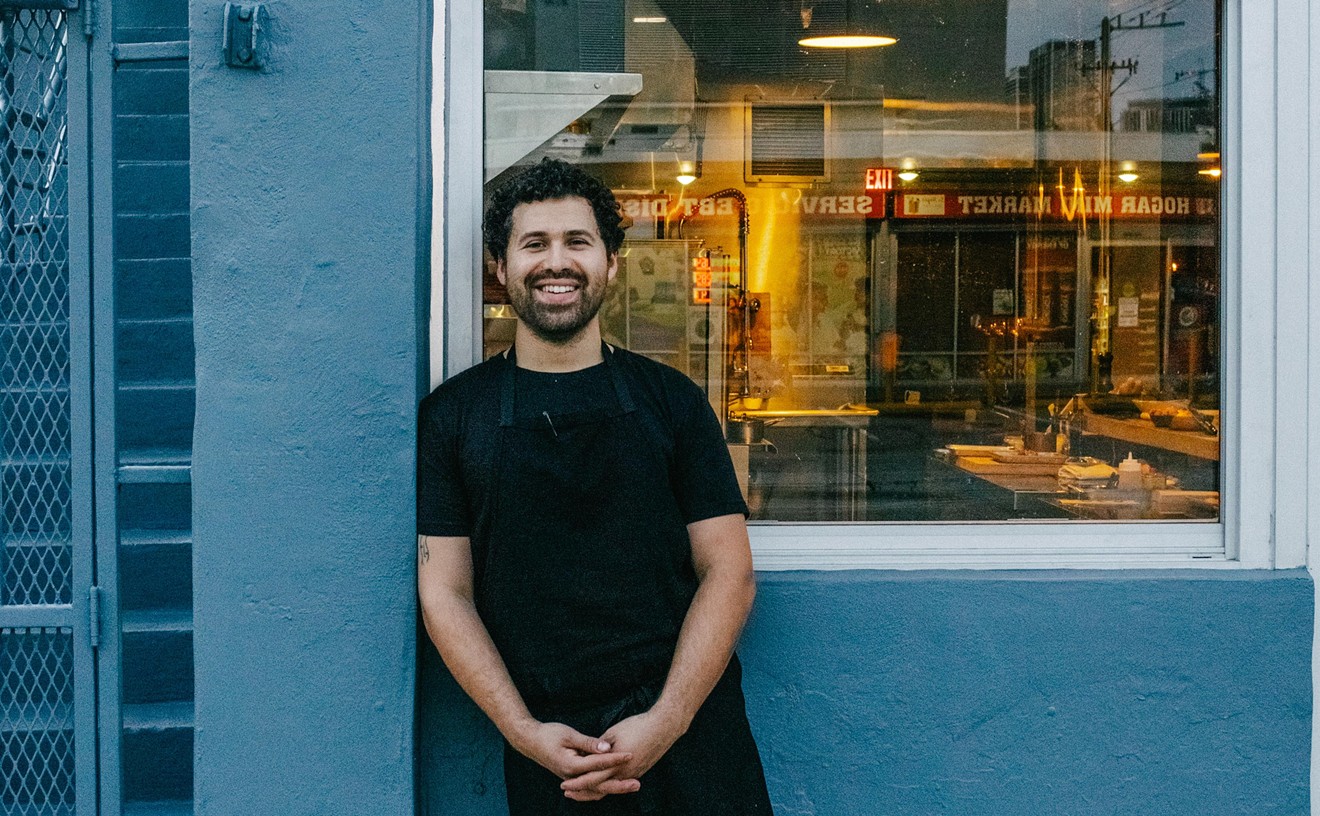The milk aisle these days is a lot more complicated than it was ten years ago. There was a time when 1 percent seemed exotic. Nowadays, they're squeezing milk out of rice, almonds, soy beans, and coconuts in plain, vanilla, chocolate, mocha, unsweetened, light, and organic varieties. The dairy case has become a place to stand and furrow your brow, compare nutrition labels, and squabble with your significant other over the merits of Silk or Eighth Continent.
There's little debate that a switch to vegetable-based "milks" is a good thing for the environment. It takes significantly fewer resources to produce a gallon of soy or almond milk than it does to extract a gallon of milk from a cow. The question is, of the two main contenders on the vegetable milk scene -- soy and relative newcomer almond milk -- which is superior? At the Publix on South Beach's 5th Street and Alton Road, these alternative milks seem to fly off the shelves faster than cow's milk, but why do people choose one over the other?
Soy milk has been around for ages and is even touted by the FDA and the ADA as a preventative medicine against heart disease and as an aid in lowering bad cholesterol. It's high in protein (about seven grams per eight ounces), high in vitamin B1, and lower in sodium than regular milk. Many soy milks are now fortified to contain as much calcium and vitamin D as milk, plus B12 and magnesium. The fat content usually hovers around four grams, similar to that of 2 percent milk, but unlike cow's milk, the saturated fat content is usually almost nil.
On the downside, there's been a lot of talk about the phytoestrogens that are dense in soy foods. Phytoestrogens acting as estrogen mimics in the body might affect the body's estrogen production or the way it's used, depending on the dosage. Some studies suggest soy prevents breast cancer; other rudimentary studies suggest it might increase the risk. There are no truly reliable studies to lean on, and so some consumers shy away from overconsumption of soy. Other critics of soy milk point to its sugar content (eight grams for vanilla soy milk), but this can be avoided by buying unsweetened varieties.
Almond milk made a strong surge on the market, helping alternative milk sales rise by 13 percent last year, maybe partly as a result of the soy-estrogen whispers. This opportunistic little nut milk now comes in just about every variety that soy does. It's superlow in calories --- 60 per cup for standard varieties and just 35 for the unsweetened versions that are emerging. They can have up to 50 percent more calcium than dairy milk and are rich in vitamin E. What these milks lack, though, are the protein and the thick, milk-like texture of their soy brethren. Sigh.
So with these factors weighing on either side, what makes today's South Beach consumer choose one over the other? I spent a recent weeknight lurking around the dairy case at the south South Beach Publix to find out.
Miami Beach local Victoria Rebagliati switched to soy milk three years ago. "I read an article that said you're not supposed to drink regular milk after you're 16 because you don't need calcium anymore," she said.
Well, I was unable to verify this (false) information, and even if it were true, most soy milks are calcium-fortified to mirror milk's content. Anyway, Rebagliati had more to say about her specific alterna-milk choice. "Vanilla soy milk goes way better with everything. If you put almond milk on your Cocoa Puffs, that just does not go. The flavors don't mix. It also lasts longer in your fridge."
Italian import and SoBe resident Nico Totaro says he likes both almond and soy, depending on his mood, but he thinks almond milk is more similar to real milk. Why not just drink real milk? "I sometimes think it's too heavy. Plus it's for cows!" he said.
So after all the science about soy and almond milks, it's aesthetics that are the deciding factors in South Beach.
Well, is anyone surprised?
Follow Short Order on Facebook and Twitter @Short_Order.










